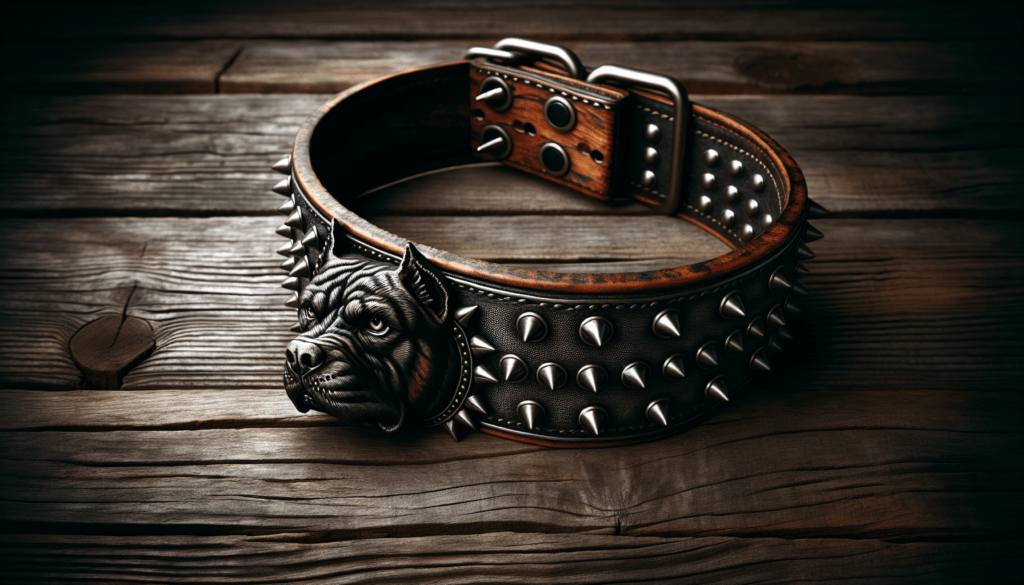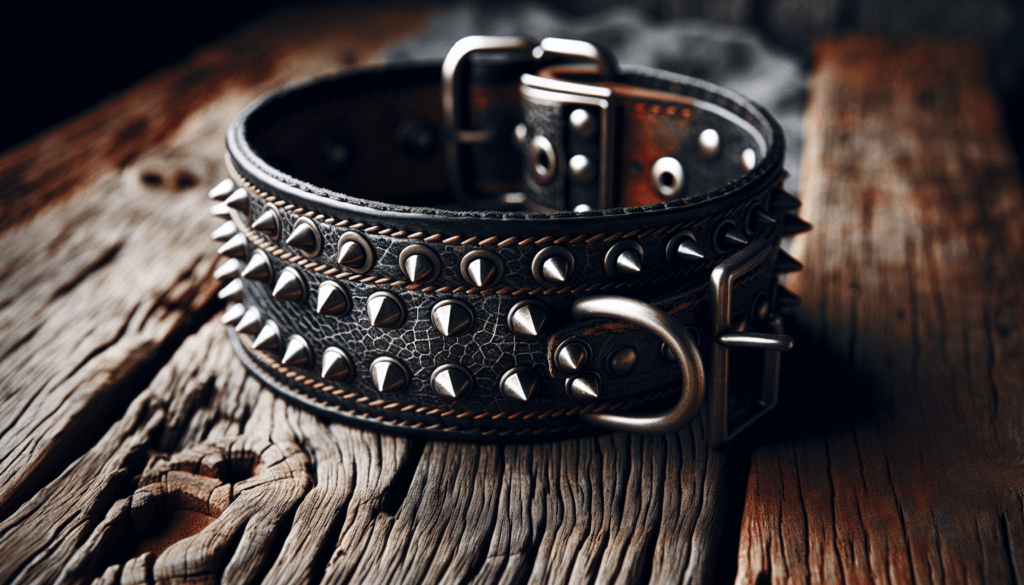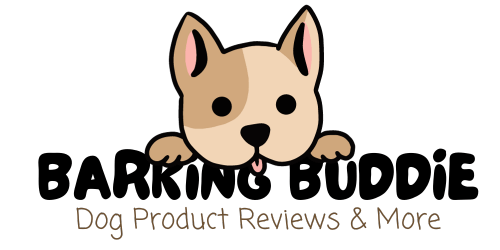Imagine strolling through a suburban neighborhood, enjoying the cheerful chatter of birds and the gentle rustle of leaves. As you round a corner, you come face to face with a dog that exudes an undeniable aura of strength and power. Its imposing appearance triggers a mix of curiosity and unease. In this article, we will explore the topic of dangerous dog breeds, shedding light on breeds that possess certain characteristics and traits that may warrant caution and consideration. Let us embark on this journey to gain a deeper understanding of these fascinating creatures and navigate the world of dog ownership with knowledge and awareness.
Understanding Dangerous Dog Breeds
If you’re curious about dangerous dog breeds, it’s important to approach the topic with an open mind and a willingness to learn. The term “dangerous dog breeds” is often controversial and can lead to heated debates among dog lovers. However, understanding the characteristics that can make certain breeds more prone to aggression is crucial for responsible dog ownership. In this article, we will explore what makes a dog breed dangerous, the controversy surrounding these breeds, and delve into statistics, facts, and factors that contribute to dog aggression.
What Makes a Dog Breed Dangerous?
When discussing dangerous dog breeds, it’s essential to clarify that not all dogs within a particular breed are dangerous. It’s unfair to label an entire breed as dangerous based on the actions of a few individuals. However, certain breeds may have inherent characteristics that, when mismanaged or improperly trained, can increase the likelihood of aggression. Factors such as a breed’s physical strength, prey drive, territorial instincts, and history of selective breeding for specific traits can all contribute to their potential for aggression.
Controversy Surrounding Dangerous Dog Breeds
The topic of dangerous dog breeds is highly contentious, with strong opinions on both sides of the debate. Some argue that it’s unfair to label certain breeds as intrinsically dangerous, believing that responsible ownership and proper training can prevent aggression. Others contend that certain breeds have a higher propensity for aggression due to genetics and should be regulated or even banned. Understanding and respecting different viewpoints is crucial for having informed discussions on this sensitive topic.
Dog Bite Statistics
To gain a clearer understanding of dangerous dog breeds, it’s important to consider dog bite statistics. According to the American Veterinary Medical Association (AVMA), approximately 4.7 million people in the United States are bitten by dogs each year. While any dog, regardless of breed, has the potential to bite, certain breeds are consistently involved in a higher number of dog bite incidents. These statistics provide valuable insights into the breeds that may require extra precaution and responsible ownership.
Fatal Dog Attacks
While fatal dog attacks are rare, they highlight the potential dangers associated with certain breeds. According to the Centers for Disease Control and Prevention (CDC), from 2005 to 2017, pit bulls were responsible for the majority of fatal dog attacks in the United States. It’s worth noting that these statistics do not necessarily imply that pit bulls are inherently dangerous, but rather that they were involved in a higher number of fatal incidents during this period. Responsible ownership, training, and early intervention are all crucial elements for preventing fatal dog attacks.
Most Dangerous Dog Breeds
Determining the most dangerous dog breeds is a challenging task due to the subjectivity of the term “dangerous.” However, various organizations and experts have compiled their lists based on factors such as bite incidents, aggression, and historical data. Some breeds that commonly appear on these lists include the American Pit Bull Terrier, Rottweiler, German Shepherd, Doberman Pinscher, Boxer, Chow Chow, Siberian Husky, Alaskan Malamute, and Akita. It’s important to note that these breeds are not inherently dangerous, but they may have certain characteristics that require responsible ownership and proper management.

Breed-Specific Legislation
In an effort to address the concerns surrounding dangerous dog breeds, some jurisdictions have implemented breed-specific legislation (BSL). BSL is a set of laws and regulations that specifically target certain breeds or types of dogs deemed dangerous. While the intention behind BSL is to protect public safety, it is a controversial approach. Critics argue that BSL is ineffective, as it tends to focus on breed rather than individual behavior. Others argue that BSL unfairly targets responsible dog owners and infringes upon the rights of responsible dog breeders and enthusiasts.
American Pit Bull Terrier
The American Pit Bull Terrier is one of the most commonly discussed breeds when it comes to dangerous dogs. Despite its unfair reputation, the American Pit Bull Terrier can be a loving and loyal family companion when properly trained and socialized. This breed’s strength and athleticism, coupled with its strong prey drive, can lead to potential challenges. Responsible ownership, consistent training, and positive socialization play a crucial role in the prevention of any aggressive tendencies.
Rottweiler
The Rottweiler is often labeled as a dangerous breed due to its strong protective instincts and muscular build. Like any dog breed, individual temperaments may vary, and responsible ownership is paramount. Early socialization, positive training methods, and setting clear boundaries are essential in preventing any potential aggression. It’s important to remember that the reputation of the Rottweiler as a dangerous breed is a result of the actions of a few individuals and should not overshadow the millions of well-behaved and loving Rottweilers in the world.
German Shepherd
German Shepherds are known for their intelligence, loyalty, and versatility. However, their strong protective instincts and drive to work can potentially lead to aggression if not properly managed. Socialization from an early age, positive reinforcement training methods, and regular mental and physical exercise are vital for a well-adjusted German Shepherd. Responsible ownership and understanding the breed’s needs can help prevent any aggression and ensure a happy and balanced relationship with this wonderful breed.
Doberman Pinscher
Doberman Pinschers are often misunderstood and considered dangerous due to their reputation as guard dogs. While they have an innate protective instinct, Dobermans can be loving, loyal, and highly trainable companions when provided with proper care and guidance. Early socialization, positive reinforcement training, and consistent exercise are crucial in preventing any aggressive behaviors. Responsible ownership and providing a stable and stimulating environment contribute to a well-balanced Doberman Pinscher.
Boxer
The Boxer is a breed renowned for its playful and friendly demeanor. While it is generally not considered one of the most dangerous breeds, it still possesses a large build and strong jaws, which can cause harm if mismanaged. Early socialization, positive reinforcement training, and mental and physical stimulation are vital for a well-behaved Boxer. Responsible ownership, consistent exercise, and plenty of affection contribute to a happy and well-adjusted Boxer companion.

Chow Chow
The Chow Chow is known for its unique appearance and independent nature. This breed’s strong-willed personality, combined with their natural guarding instincts, can make them potentially dangerous if not properly trained and socialized. Early socialization, firm and consistent training methods, and adequate mental and physical stimulation are necessary to prevent any aggressive tendencies. Responsible ownership and understanding the breed’s specific needs are key to having a well-behaved and safe Chow Chow.
Siberian Husky
Siberian Huskies are beloved for their striking appearance and friendly nature. However, their high energy levels and strong prey drive can pose challenges in certain situations. Early socialization, positive reinforcement training, and regular exercise are crucial for a well-behaved Siberian Husky. Responsible ownership, including properly containing this breed due to their ability to escape, is essential to prevent any potential aggression.
Alaskan Malamute
Alaskan Malamutes are known for their strong pack instincts and playful personalities. While they are typically friendly and affectionate, improper training or socialization can lead to aggressive behavior. Early socialization, basic obedience training, and consistent exercise are vital for a well-rounded Alaskan Malamute. Proper containment and responsible ownership are also essential for a safe and rewarding relationship with this breed.
Akita
The Akita is a large and powerful breed with a strong protective instinct. While they can be loyal and affectionate companions, they require knowledgeable and dedicated owners who can provide firm and consistent training. Early and ongoing socialization, positive reinforcement training methods, and understanding the breed’s unique characteristics are necessary to prevent any potential aggression. Responsible ownership, including securely containing the Akita, is crucial for the safety of both the dog and the community.
Factors Contributing to Dog Aggression
Understanding the factors that contribute to dog aggression is essential in managing and preventing dangerous situations. While aggression can arise from various factors, including health issues, fear, and territoriality, there are some common elements to consider.
Genetics and Breeding
Genetics and breeding play a significant role in a dog’s behavior. Certain breeds may carry genetic traits that make them more prone to aggression or protective behaviors. However, it’s important to remember that genetics are not the sole determinants of a dog’s behavior. Responsible breeding practices, including thorough health and temperament screenings, can help reduce the chances of passing on aggressive tendencies to offspring.
Lack of Socialization
Lack of socialization during a dog’s critical developmental stages can contribute to aggressive behavior. Early exposure to various environments, people, animals, and experiences helps dogs build confidence and learn appropriate behavior. Properly socializing a dog from an early age can greatly reduce instances of fear-based aggression.
Training and Handling
Proper training and handling are essential in preventing and managing dog aggression. Training that emphasizes positive reinforcement, consistency, and clear communication can teach dogs appropriate behaviors and help them understand boundaries. Harsh training methods or inconsistent handling can exacerbate aggressive tendencies and lead to unpredictable behavior.
Abuse and Neglect
Abuse and neglect are significant factors that can contribute to dog aggression. Dogs that have suffered from mistreatment or lack of care may become fearful, defensive, or aggressive. Rescued dogs may require extra patience, positive reinforcement, and professional guidance to overcome past traumas and develop trust.
Understanding Dog Aggression
Dog aggression can manifest in various forms, and it’s important to recognize and understand these different types.
Types of Dog Aggression
Aggression in dogs can be classified into several types, including fear-based aggression, territorial aggression, protective aggression, possessive aggression, social aggression, and predatory aggression. Each type of aggression has its own triggers and requires unique management techniques. Recognizing the specific type of aggression is crucial in addressing and managing it effectively.
Warning Signs of Aggression
Recognizing warning signs of aggression is crucial for preventing potentially dangerous situations. Common warning signs include growling, baring teeth, raised hackles, intense staring, stiff body posture, and lunging. It’s important to intervene and remove a dog from a triggering situation before aggression escalates.
Triggers for Aggression
Aggression can be triggered by various factors, including fear, perceived threat, resource guarding, territoriality, or a lack of proper socialization. Identifying and understanding a dog’s triggers can help owners anticipate potential situations and prevent aggression from occurring.
Managing Dangerous Dog Breeds
Owning a dog breed that may be considered dangerous requires responsible ownership and proactive management strategies to ensure the safety of both the dog and the community.
Responsible Ownership
Responsible ownership is crucial for managing dangerous dog breeds. This includes providing proper training, socialization, and care, as well as taking precautions to prevent any potential aggression. Responsible owners understand their breed’s unique needs and are committed to keeping their dogs and the community safe.
Proper Training and Socialization
Training and socialization are essential for all dogs, but they are especially important for breeds that have the potential for aggression. Early socialization with different people, animals, and environments, coupled with consistent and positive reinforcement training, can prevent the development of aggressive behaviors.
Secure Fencing and Containment
Secure fencing and containment are crucial for managing dangerous dog breeds. Proper fencing ensures that the dog cannot escape and potentially cause harm to others or themselves. It also protects the dog from external triggers that may induce aggression. Responsible owners understand the importance of secure containment and take necessary precautions to prevent any untoward incidents.
Muzzles and Leashes
When in public or in situations that may be stressful or challenging, using a muzzle or leash can provide an additional level of safety. Muzzles can prevent a dog from biting, while leashes ensure that the owner has control over the dog’s movement. This allows responsible owners to manage potentially aggressive behavior and prevent any harm to others.
Legal Requirements
It’s important for owners of dangerous dog breeds to understand and comply with legal requirements. Some jurisdictions have specific regulations regarding the ownership of certain breeds, including mandatory licensing, insurance, and additional safety measures. Adhering to these requirements helps ensure the safety of the dog, the owner, and the community.
Addressing the Stereotype of Dangerous Breeds
The stereotype surrounding dangerous dog breeds is a topic that deserves careful consideration and discussion. Stereotyping an entire breed based on the actions of a few individuals is unfair and can perpetuate misconceptions. It’s essential to recognize that responsible ownership plays a significant role in preventing aggressive behavior, and labeling an entire breed as dangerous disregards the millions of well-behaved and loving dogs of those breeds.
Unfair Stereotyping
Stereotyping dangerous dog breeds can have detrimental effects on both the breed and responsible owners. It can lead to breed-specific legislation and restrictions that negatively impact responsible dog owners and enthusiasts. Stereotyping can also create an environment of fear and prejudice that further fuels misconceptions about certain breeds.
Responsible Ownership vs. Breed Reputation
The key to addressing the stereotype surrounding dangerous breeds lies in responsible ownership. It’s important for owners of potentially dangerous dog breeds to be diligent in providing proper training, socialization, and care. By showcasing responsible ownership and advocating for the positive traits of their breeds, owners can challenge stereotypes and promote a more accurate understanding of these dogs.
Educating the Public
Education is crucial in combating stereotypes and promoting responsible dog ownership. Public education campaigns can provide valuable information on responsible ownership, breed-specific traits, managing aggression, and debunking common myths. By educating the public, we can foster a more educated and empathetic society that understands and appreciates the diverse nature of dog breeds.
Rehabilitation and Prevention
Rehabilitating aggressive dogs and preventing aggression in the first place are key to reducing the risks associated with dangerous dog breeds.
Behavioral Rehabilitation Programs
Behavioral rehabilitation programs play a vital role in helping aggressive dogs become well-adjusted members of society. These programs typically involve professional training, behavior modification, and socialization to address underlying issues and promote desirable behaviors. Rehabilitation programs can significantly increase the chances of rehoming dogs that may otherwise be labeled as dangerous.
Early Intervention and Socialization
Early intervention and proactive socialization are essential in preventing aggression from developing. Puppies should be exposed to various stimuli, experiences, and environments from a young age to build their confidence and teach appropriate behaviors. Early intervention at the first signs of aggression can prevent the behavior from escalating and becoming ingrained.
Responsibility of Breeders and Shelters
Breeders and shelters play a crucial role in preventing aggression in dangerous dog breeds. Responsible breeders focus on temperament and health screenings, breeding only from dogs that exhibit desirable traits and are deemed suitable for breeding. Shelters should prioritize socialization, behavior assessments, and proper matching to ensure that dogs are placed in appropriate homes. By practicing responsible breeding and adoption protocols, breeders and shelters can contribute to reducing aggression in dangerous dog breeds.
Conclusion
Understanding dangerous dog breeds requires an open mind and factual information. While certain breeds may have characteristics that predispose them to aggression, responsible ownership, training, socialization, and proper management can prevent issues. It’s essential to approach this topic without prejudice and address the stereotype surrounding dangerous breeds through education, responsible ownership, and rehabilitation efforts. By doing so, we can promote a safer and more compassionate society for both humans and dogs alike.


